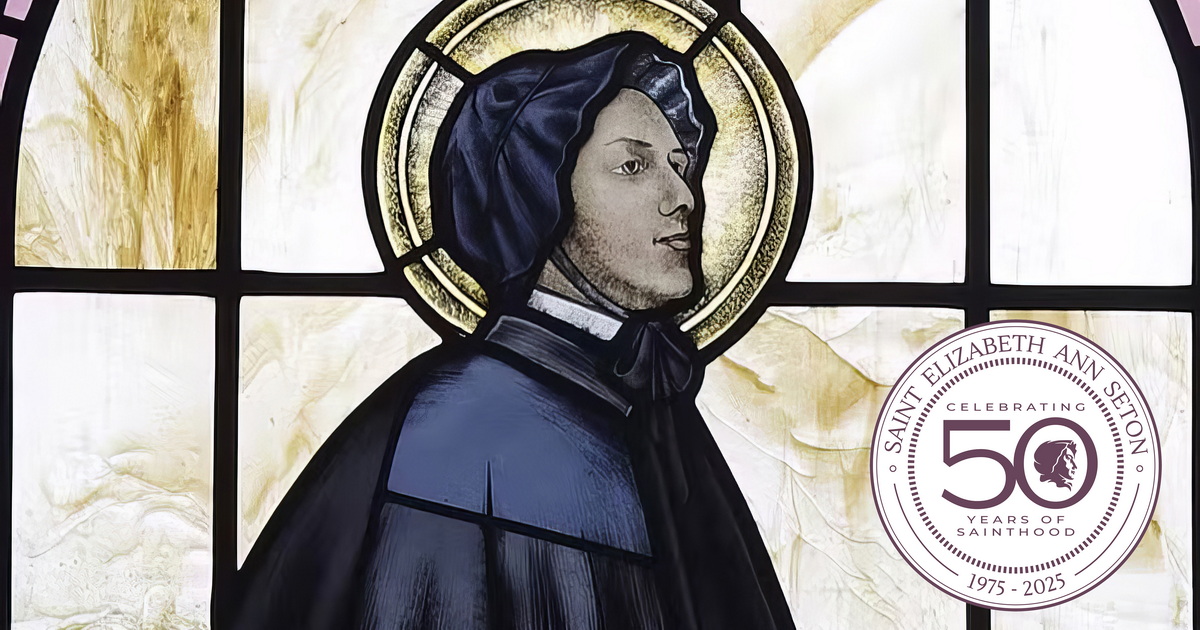As we approach the 50th anniversary of Mother Elizabeth Ann Seton’s canonization in 2025, it’s an opportune moment to reflect on her profound legacy and the groundbreaking nature of her recognition as a saint. Mother Seton’s canonization, which took place on September 14, 1975, under Pope Paul VI, marked a series of remarkable “firsts” that continue to resonate within the Catholic Church and beyond.
The First Daughter of the United States To Be Canonized
Mother Seton’s canonization was historic as she became the first American-born individual to be formally recognized as a saint. This milestone was a source of immense pride for the Catholic community in the United States, symbolizing the Church’s growing roots in the New World and the sanctity that could arise from its unique cultural and historical context.
The First Founder of a Catholic School in the United States
As the founder of the first free Catholic school for girls in the United States, Mother Seton established a transformative educational model. Her school set the standard for Catholic education, emphasizing quality instruction and accessibility for all, regardless of social status. This pioneering effort laid the groundwork for the vast network of Catholic schools we see today.
The First Religious Congregation for Women in the U.S.
In 1809, Mother Seton founded the Sisters of Charity, the first religious congregation for women established in the United States. This community became a cornerstone for charitable and educational missions, profoundly shaping the Church’s outreach in America. Her leadership as a woman religious was unprecedented and set a powerful example of service and dedication.
The First American Convert to Catholicism Canonized as a Saint
Elizabeth Ann Seton’s journey to sainthood included her conversion to Catholicism—another remarkable “first.” Born into a Protestant family, her decision to embrace the Catholic faith after her husband’s death was a courageous and transformative step. Her conversion highlights the universal nature of the Church and its ability to welcome and sanctify individuals from all backgrounds.
The First Saint of Modern Catholicism in the United States (1975)
Her canonization also marked the first time modern American Catholicism had a saint of its own, reflecting the Church’s growth and vitality in the United States. The event was a moment of unity and pride for American Catholics, who saw in Mother Seton a model of faith and perseverance uniquely rooted in their own context.
A Legacy of Education and Service
Mother Seton’s influence is perhaps most visible in the Catholic education system. Her emphasis on providing quality education to all set a standard that remains a cornerstone of Catholic schools worldwide.
Her legacy extends beyond education to encompass a life of service to the poor and sick. The Sisters of Charity, the religious community she founded, grew into a global network of institutions dedicated to healthcare, education, and social work. This enduring impact reflects her vision of faith in action, demonstrating that true holiness is lived out through love and service to others.
Looking Ahead to 2025
As we prepare to commemorate the 50th anniversary of her canonization, Mother Seton’s life and legacy invite us to reflect on our own call to holiness. Her journey from a Protestant upbringing to becoming a Catholic saint serves as a powerful reminder of the transformative power of faith and the universal call to serve God through our unique circumstances.
Mother Elizabeth Ann Seton’s canonization was not just a celebration of her personal sanctity but a testament to the vitality of the Church in America and its potential to produce saints who reflect the diversity and dynamism of its people. As we honor her in 2025, may her life inspire us to seek God in all things and dedicate ourselves to the service of others.
Based on an article written by Joseph Pronechen for the National Catholic Register.






0 Comments